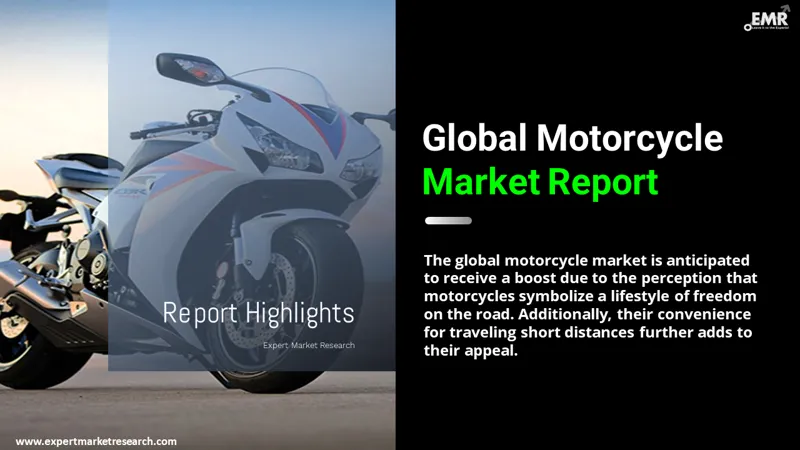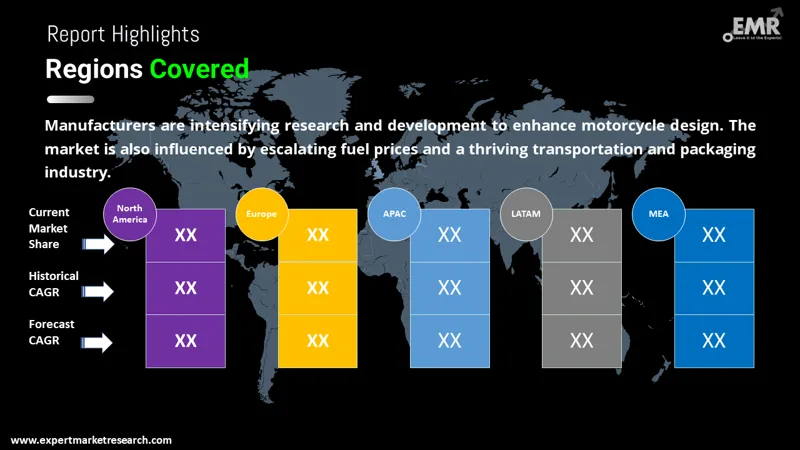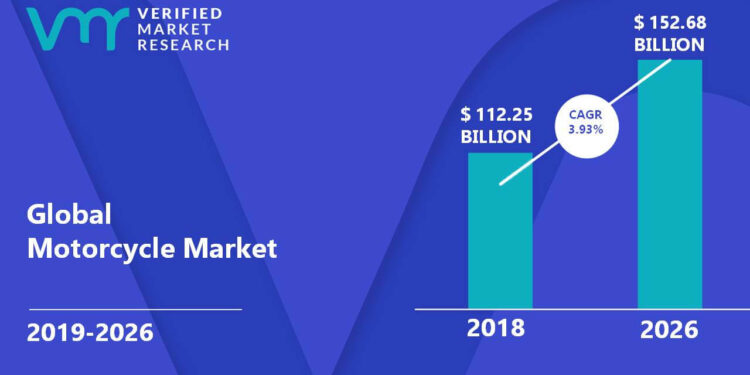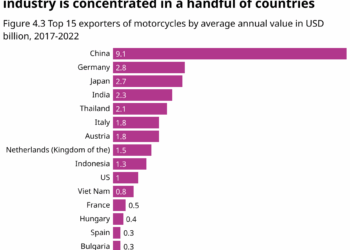Delving into the realm of motorcycle market trends for 2025, this analysis uncovers the key factors, technological innovations, market segmentation, and environmental sustainability shaping the industry's landscape. Brace yourself for an insightful journey ahead!
As we navigate through the dynamics of the motorcycle market in 2025, we will unravel the projected growth, regional variations, and the transformative impact of technological advancements on consumer preferences.
Overview of the Motorcycle Market Trends 2025

In 2025, the motorcycle market is expected to witness significant shifts influenced by various key factors. These factors will shape the industry's growth trajectory and regional variations.
Key Factors Influencing Motorcycle Market Trends
- The rise of electric motorcycles as sustainable transportation options.
- Increasing demand for high-performance motorcycles among enthusiasts.
- Technological advancements leading to enhanced safety features in motorcycles.
- Changing consumer preferences towards adventure and touring bikes.
Projected Growth or Decline in the Motorcycle Market
The motorcycle market is projected to experience steady growth by 2025, driven by the increasing adoption of electric motorcycles and innovative technologies. However, traditional gasoline-powered motorcycles may witness a decline in sales as the shift towards electric vehicles continues.
Regional Variations in Motorcycle Market Trends
- In Asia-Pacific, the motorcycle market is expected to thrive due to the high demand for affordable two-wheelers.
- In Europe, the focus is shifting towards electric motorcycles and sustainable mobility solutions.
- In North America, the market is witnessing a rise in sales of premium motorcycles catering to niche segments.
Technological Innovations in Motorcycles
In recent years, the motorcycle industry has been rapidly evolving with technological advancements that are reshaping the way we ride. From electric bikes to autonomous features, these innovations are not only changing the riding experience but also influencing consumer preferences and market dynamics.
Electric Motorcycles vs. Traditional Models
Electric motorcycles have gained significant traction in the market due to their eco-friendly nature and lower maintenance costs. These bikes are powered by rechargeable batteries, eliminating the need for gasoline and reducing harmful emissions. In contrast, traditional motorcycles rely on internal combustion engines, which contribute to air pollution and require more frequent maintenance.
As consumers become more environmentally conscious, the demand for electric motorcycles is expected to rise, challenging the dominance of traditional models.
Autonomous Features in Motorcycles
Autonomous technology is another major innovation in the motorcycle industry, with features like adaptive cruise control, lane-keeping assist, and automatic emergency braking becoming more common. These advancements enhance rider safety by reducing the risk of accidents caused by human error.
Autonomous motorcycles also have the potential to improve traffic flow and reduce congestion on the roads. However, concerns about the reliability and cybersecurity of autonomous systems remain, impacting consumer acceptance and adoption rates.
Impact on Consumer Preferences and Market Dynamics
The introduction of electric and autonomous motorcycles has diversified the market, offering consumers more choices than ever before. While some riders prefer the thrill of traditional bikes, others are drawn to the convenience and sustainability of electric models. Similarly, tech-savvy consumers may be more inclined to embrace autonomous features for added safety and convenience.
As a result, manufacturers are adapting their product offerings to cater to these evolving preferences, leading to a more competitive and dynamic industry landscape.
Market Segmentation and Target Audience

Motorcycle market segmentation plays a crucial role in understanding consumer preferences and tailoring products to meet their needs. Manufacturers need to identify the target audience for different categories of motorcycles to effectively market their products in 2025.
Demographic Segmentation
- Manufacturers segment the market based on age, income, gender, and occupation to target specific consumer groups.
- Youth-oriented motorcycles are designed for younger riders looking for style and performance, while touring bikes cater to older riders seeking comfort and long-distance capabilities.
- High-income individuals may be targeted with premium models featuring advanced technology and luxury amenities.
Geographic Segmentation
- Manufacturers analyze regional preferences and adapt their product offerings accordingly.
- Urban areas may see a demand for compact and agile motorcycles for commuting, while rural regions might prefer rugged off-road bikes for adventure riding.
- Certain markets may prioritize eco-friendly electric motorcycles, leading manufacturers to focus on sustainability in those regions.
Product Type Segmentation
- Motorcycle categories such as cruisers, sport bikes, adventure bikes, and scooters appeal to different riding styles and preferences.
- Manufacturers develop specialized models within each category to target niche segments, such as cafe racers for retro enthusiasts or dual-sport bikes for off-road enthusiasts.
- Customization options are increasingly popular, allowing consumers to personalize their motorcycles to reflect their individuality.
Environmental Sustainability and Regulations
In recent years, environmental sustainability has become a crucial factor influencing the motorcycle industry. With growing concerns about climate change and pollution, there has been a significant shift towards eco-friendly practices and the implementation of stricter regulations.
Shift towards Eco-Friendly Practices
The motorcycle industry is increasingly focusing on developing and promoting eco-friendly alternatives, such as electric motorcycles. These vehicles produce zero emissions, reducing the environmental impact of traditional gasoline-powered bikes. Companies are investing heavily in research and development to improve the performance and affordability of electric motorcycles, anticipating a surge in demand for sustainable transportation solutions.
Regulatory Impact on Design and Production
Regulatory changes aimed at reducing emissions and promoting environmental sustainability are also driving innovation in the design and production of motorcycles. Manufacturers are compelled to adhere to stricter emission standards, leading to the integration of cleaner technologies and materials in their products.
This has resulted in the adoption of lightweight materials, improved fuel efficiency, and the development of hybrid or electric models to meet regulatory requirements.
Epilogue

In conclusion, the motorcycle market trends for 2025 paint a picture of evolution, adaptation, and sustainability. With a focus on consumer needs, environmental consciousness, and innovative technologies, the future of the motorcycle industry seems promising and exciting.
Popular Questions
What are the key factors influencing motorcycle market trends in 2025?
Factors such as technological advancements, consumer preferences, regulatory changes, and environmental concerns play a pivotal role in shaping motorcycle market trends for 2025.
How are manufacturers tailoring their products to meet the diverse needs of consumers in 2025?
Manufacturers are focusing on customization, eco-friendly practices, and innovative features to cater to the varied demands of consumers in the evolving motorcycle market of 2025.
What is the impact of technological innovations on the motorcycle industry in 2025?
Technological innovations are revolutionizing the industry by introducing electric and autonomous models, influencing consumer preferences, and driving market dynamics towards a more sustainable future.
How are regulatory changes affecting the design and production of motorcycles in 2025?
Regulatory changes are pushing manufacturers towards sustainable practices, leading to the development of eco-friendly motorcycles and influencing the overall design and production processes to align with environmental standards in 2025.











